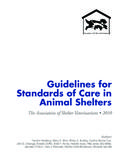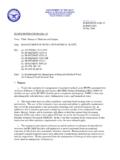Transcription of ADVANTAN Presentation Uses - Medsafe
1 ADVANTAN Data Sheet Page 1 of 9 ADVANTAN methylprednisolone aceponate ointment/cream Presentation 1 g cream or ointment contains 1 mg ( ) methylprednisolone aceponate . uses Actions After topical application, ADVANTAN suppresses inflammatory and allergic skin reactions as well as reactions associated with hyperproliferation, leading to regression of the objective symptoms (erythema, edema, infiltration, lichenification) and the subjective complaints (itching, burning, pain). On application of methylprednisolone aceponate in topically effective dosage, the systemic effect is minimal in both man and animals. After large-area treatment of patients with skin disorders, the plasma cortisol values remain within the normal range, circadian cortisol rhythm is maintained and no reduction of cortisol has been ascertained in 24-hour urine. As for all other glucocorticoids, so far the mechanism of action of methylprednisolone aceponate is not completely understood.
2 It is known that methylprednisolone aceponate itself binds to the intracellular glucocorticoid receptor and this is especially true of the principal metabolite 6 -methyl -prednisolone -17-propionate, which is formed after cleavage in the skin. The steroid receptor complex binds to certain regions of DNA, thereby triggering a series of biological effects. The understanding of the mechanism of the anti-inflammatory action is more precise. Binding of the steroid receptor complex results in induction of macrocortin synthesis. Macrocortin inhibits the release of arachidonic acid and thus the formation of inflammation mediators such as prostaglandins and leukotrienes. The immunosuppressive action of glucocorticoids can be explained by inhibition of cytokine synthesis and an antimitotic effect, which so far is not well understood. Inhibition of the synthesis of vasodilating prostaglandins or potentiation of the vasoconstrictive effect of epinephrine finally results in the vasoconstrictive activity of glucocorticoids.
3 The respective bases are of major importance to the therapeutic effect of the ADVANTAN formulations. ADVANTAN Data Sheet Page 2 of 9 ADVANTAN cream As a low-fat formulation with a high water content, ADVANTAN cream is particularly suitable for acute and subacute weeping stages of eczema, for very greasy skin and for use on exposed or hairy parts of the body. ADVANTAN ointment Skin conditions which are neither weeping nor very dry require a base with balanced proportions of fat and water. ADVANTAN ointment is suitable for dry, fissured, scaly or hyperkeratinised skin areas. It should not be used in areas such as axilla, groin or skin folds. ADVANTAN ointment makes the skin slightly greasy without retaining warmth and fluid. Of the three formulations, ADVANTAN ointment has the widest field of use. Pharmacokinetics methylprednisolone aceponate (MPA) becomes available in the skin from all formulations (cream, ointment).
4 The concentration in the stratum corneum and living skin decreases from outside to inside. methylprednisolone aceponate is hydrolyzed in the epidermis and dermis to the main metabolite 6 - methylprednisolone -17-propionate which binds more firmly to the corticoid receptor an indication of bioactivation in the skin. The degree of percutaneous absorption depends on the state of the skin, the formulation and the conditions of application (open/occlusion). Studies in juvenile and adult patients with neurodermatitis and psoriasis have shown that the percutaneous absorption on open application was only slightly ( ) greater than the percutaneous absorption in volunteers with normal skin ( - %). When the horny layer is removed before the application, the corticoid levels in the skin are about three times higher than after application to intact skin. After reaching the systemic circulation, the primary hydrolysis product of MPA, 6 methylprednisolone -17-propionate, is quickly conjugated with glucuronic acid and inactivated as a result.
5 The metabolites of MPA (main metabolite: 6 - methylprednisolone -17-propionate-21- glucuronide) are eliminated primarily via the kidneys with a half-life of about 16 hours. Following administration, excretion of the 14C-labeled substances with the urine and feces was complete within 7 days. No accumulation of substance or metabolites takes place in the body. Indications Atopic dermatitis (endogenous eczema, neurodermatitis), contact eczema, degenerative, dyshidrotic, vulgar eczema, eczema in children. ADVANTAN Data Sheet Page 3 of 9 Dosage and Administration ADVANTAN is for EXTERNAL TOPICAL USE ONLY and NOT FOR OPTHALMIC USE. In general, the ADVANTAN formulation appropriate to the skin condition is applied thinly once per day to the diseased areas of skin. In general, the duration of use should not exceed 12 weeks in adults and 4 weeks in children. Contraindications ADVANTAN is contraindicated in most viral diseases ( vaccinia, varicella/herpes zoster) and when tuberculous or syphilitic processes and post-vaccination skin reactions are present in the area to be treated.
6 If rosacea, acne vulgaris, ulcera, atrophic skin diseases, or perioral dermatitis are present, ADVANTAN must not be applied to the face. Hypersensitivity to the active substance or to any of its excipients. Warnings and Precautions Care must be taken when using ADVANTAN to avoid contact with the eyes, deep open wounds and mucosae. Additional specific therapy is required in bacterially infected skin diseases and/or in fungal infections. Any spread of infection may require withdrawal of topical corticosteroid therapy. If the skin dries out excessively under protracted use of ADVANTAN cream, a switch should be made to ADVANTAN ointment, a formulation which has a higher fat content. If signs of hypersensitivity develop ADVANTAN should be discontinued and appropriate treatment instituted. Any of the side effects that have been reported following systemic use of corticosteroids, including adrenal suppression, may also occur with topical corticosteroids, especially in infants and children.
7 ADVANTAN is a potent steroid formulation, as with other corticosteroids of this type the possibility of hypothalmic-pituitary-adrenal (HPA) axis suppression resulting from percutaneous absorption of methylprednisolone must be considered when initiating or reviewing therapy. However, to date, no impairment of adrenocortical function has been observed when used on large areas (40 - 60 % of the skin surface) or even occlusive treatment with ADVANTAN for up to 12 weeks in adults or 4 weeks in children. ADVANTAN Data Sheet Page 4 of 9 Nevertheless, for the treatment of large areas duration of use should be kept as brief as possible. Extensive application of topical corticosteroids to large areas of the body or for prolonged periods of time, in particular under occlusion, significantly increases the risk of systemic effects. Note that nappies can occlusive. Paediatric patients may demonstrate greater susceptibility to topical corticosteroid- induced HPA axis suppression and Cushing s syndrome than adults because of a larger skin surface area to bodyweight ratio.
8 Use of topical corticosteriods in children should be limited to the least amount required for therapeutic effect. Chronic corticosteroid therapy may interfere with the growth and development of children. Local atrophy, telangiectasia and striae may occur after prolonged treatment or excessive application. Treatment should be discontinued if symptoms such as cutaneous atrophy occur. Prolonged use on flexures and in intertriginous areas is undesirable. ADVANTAN cream or ointment should not be used around the eyes. The use of topical corticosteroids on the face can exacerbate rosacea and lead to peri-orofacial dermatitis. Patients should be warned against using ADVANTAN on the face except on medical advice and any use on the face should be restricted to short periods. As known from systemic corticoids, glaucoma may also develop from using local corticoids ( after large-dosed or extensive application over a prolonged period, occlusive dressing techniques, or application to the skin around the eyes).
9 Two excipients contained in ADVANTAN .cream (cetostearyl alcohol and butyl hydroxytoluene) may cause local skin reactions ( contact dermatitis). Butyl hydroxytoluene may also cause irritation in the eyes and mucous membranes. Preclinical safety data In systemic tolerance studies following repeated subcutaneous and dermal administration MPA showed the action profile of a typical glucocorticoid. It can be concluded from these results that following therapeutic use of ADVANTAN no side-effects other than those typical of glucocorticoids are to be expected even under extreme conditions such as application over a large surface area and/or occlusion. Specific tumorigenicity studies using MPA have not been carried out. Knowledge concerning the structure, the pharmacological effect mechanism and the results from systemic tolerance studies with long-term administration do not indicate any increase in the risk of tumor occurrence.
10 As systemically effective immunosuppressive exposure is not reached with dermal application of ADVANTAN under the recommended conditions of use, no influence on the occurrence of tumors is to be expected. ADVANTAN Data Sheet Page 5 of 9 Neither in vitro investigations for detection of gene mutations on bacteria and mammalian cells nor in vitro and in vivo investigations for detection of chromosome and gene mutations gave any indication of a genotoxic potential of MPA. Animal studies with MPA have shown embryolethal defects in rats dosed subcutaneously during the period of organogenesis at doses greater than 1mg/kg/day and in rabbits following dermal application at doses greater than No teratogenic effects were observed in rabbits, but in rats the incidences of ventricular septal defects and of cleft palate were increased at subcutaneous doses greater than 1 and 10 mg/kg/day. Similar embryolethal and teratogenic effects have been found with other corticosteroids and while not considered relevant to humans, particular care should be taken when prescribing ADVANTAN during pregnancy.


















